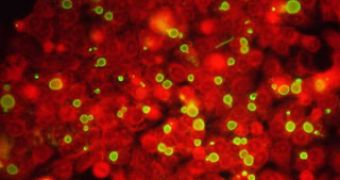HIV, syphilis or gonorrhea may sound more familiar for you, because these STDs (sexually transmitted diseases) are severe, but chlamydia, also called the "Silent Epidemic" (as in women, it may not induce any symptoms and will linger for months or years before being detected), is the most widespread STD.
Now a team at Children's Hospital of Pittsburgh of UPMC has found a potential target for developing a vaccine against Chlamydia trachomatis, the bacteria that causes the STD in humans. The scientists, led by Dr. Toni Darville, chief of the Division of Pediatric Infectious Diseases, detected a plasmid-deficient strain of Chlamydia that failed to induce the disease in lab mice. Plasmids are small DNA stretches, of foreign origin, that once inserted to the DNA of the bacteria, can increase its infectious ability.
"This finding represents a major step forward in our work to eventually develop a vaccine against chlamydial disease," said Darville, also a professor of pediatrics and microbiology/immunology at the University of Pittsburgh School of Medicine and one of the world's foremost researchers of Chlamydia trachomatis. "If we can identify plasmid-deficient derivatives of the C. trachomatis strains that infect humans, they would have the potential to serve as a vaccine against this disease."
Because Chlamydia symptoms are usually mild or absent, the bacteria can harm a woman's reproductive apparatus, inducing severe effects (up to infertility) before the woman is aware of the issue. The researchers inserted the plasmid-deficient strain coming from Chlamydia muridarum (the species that infects rodents) in lab mice.
"The mice became infected but did not develop the trademark signs of chlamydial disease, particularly damage to the oviduct, the tube that carries eggs from the ovaries," said first author Dr. Catherine M. O'Connell, from Darville's laboratory. "Not only did the mice not develop oviduct scarring after infection with the plasmid-deficient strain, we also found that the mice previously infected with these strains were protected against oviduct disease when later infected with fully virulent C. muridarum," said O'Connell.
In 2004, the Centers for Disease Control and Prevention (CDC) reported about 930,000 cases of Chlamydia infection in the US, but this is an underestimation, as most people with Chlamydia are not even aware of their infections, specialists estimating the real annual number of Chlamydia infections in the US alone at 2.8 million.
To make yourself an idea, gonorhea (the second most spread sexually transmitted disease, also caused by a bacteria) registered about 360,000 cases in the US in 2004.

 14 DAY TRIAL //
14 DAY TRIAL //